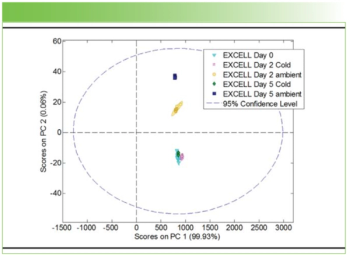
Raman Imaging of Live Cells
Raman microscopy is a promising technique for visualizing the distribution of molecules in cells. However, along with the benefits come challenges. This interview with Katsumasa Fujita, an associate professor in the Department of Applied Physics at Osaka University in Osaka, Japan, discusses his use of this technique for the imaging of live cells.
Raman microscopy is a promising technique for visualizing the distribution of molecules in cells. However, along with the benefits come challenges. This interview with Katsumasa Fujita, an associate professor in the Department of Applied Physics at Osaka University in Osaka, Japan, discusses his use of this technique for the imaging of live cells.
You have been using Raman and surface-enhanced Raman spectroscopy (SERS) microscopy for the molecular imaging of live cells to obtain information to identify elements of the sample and study the environments of analytes. What are some of the benefits of using these techniques for imaging live cells?
We are expecting that we can obtain information that the conventional imaging and sensing techniques cannot provide. A conventional approach such as fluorescence labeling is very powerful but it provides information about only molecules that can be labeled. There are many cell activities and states that cannot be identified or visualized by using the labeling techniques. We also think that the information given by labeling is much too simplified. Although Raman and SERS spectroscopy do not have specificity in molecular detection as high as fluorescence labeling, the spectra obtained possess much more information about molecules in a cell. We believe that these techniques provide important information that cannot be obtained using labeling techniques.
You and your team developed a laser-tracking Raman microscope that is equipped with a slit-scanning excitation and detection system and a laser beam steering and tracking system for dynamic imaging of molecules in living cells. What types of biological processes can be observed using this system? What information does this system yield that cannot be obtained using other techniques?
At this moment, we do not have particular applications using this technique. What we wanted to show in this research is that the dynamics of a SERS particle and the temporal change of SERS spectra provide information about biological systems. Many results obtained using SERS for detecting cellular molecules do not take this into account in data analysis. However, as we have shown (1), those dynamics tell a lot about the local environment and molecular function in a cell, and we should utilize them.
In addition, we wanted to show a new approach of cell analysis by using SERS particles. In a typical approach, a particle in a cell is controlled to obtain a measurement. We took a totally different approach in which the particle (or cell) can freely move. We gather as much data as possible from the particle itself and SERS from it, and analyze the data to find out useful information. We think this approach is useful when we need to treat very complicated samples such as cells, and it is now possible with powerful computers.
What are your next steps in your work in the imaging of live cells?
I would like to expand our technique to imaging and analysis of many different types of samples. Our current technique is limited to only observation of single cells. However, as I mentioned above, Raman spectroscopy has the advantage of label-free analysis and potential in observation of complex samples, such cell clusters and tissues. We would like to find out how Raman spectroscopy can contribute in many different biological fields through the development of Raman imaging techniques that can be applied to those samples.
Reference
(1) A.F. Palonpon, J. Ando, H. Yamakoshi, K. Dodo, M. Sodeoka, S. Kawata, and K. Fujita, Nature Protocols 8(4), 677–692 (2013).
Newsletter
Get essential updates on the latest spectroscopy technologies, regulatory standards, and best practices—subscribe today to Spectroscopy.




